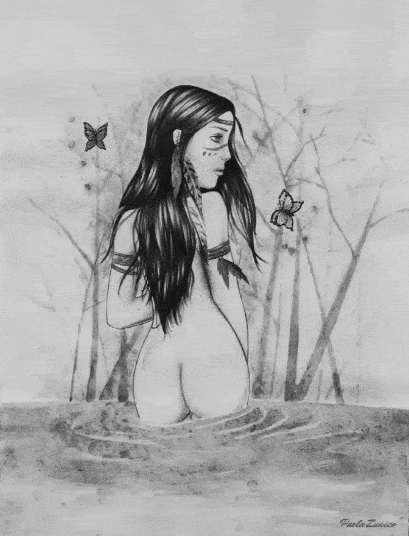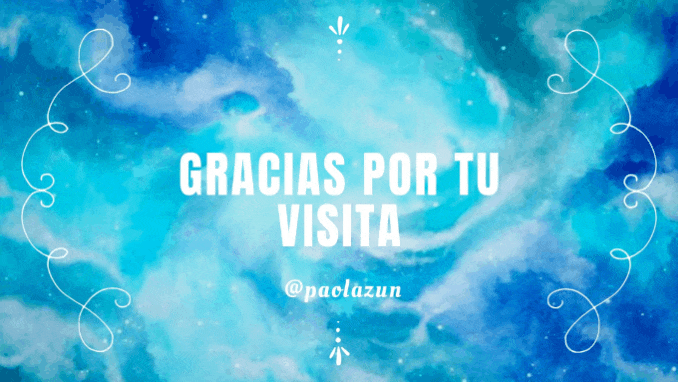In the mountain of Sorte by Yaracuy
In Venezuela, lives a goddess
In the Mountain of Sorte by Yaracuy
There lives a goddess, a noble queen
Of great beauty and of great goodness
Loved by nature
And enlightened with charity
Song by Rubén Blades and Willie Colón
In Venezuela there are countless legends of magical beings from indigenous cultures.
In the mountain of Sorte, in a natural sanctuary in the State of Yaracuy, this goddess is worshipped through different magical rites and sorcery.

Maria Lionza is part of Venezuela's cultural heritage. She is an emblematic figure of great mysticism.
Goddess of love, of great beauty, seductive, she has dominion over the jungle and rivers, protector of nature that looks with kindness to those who take care of it but punishes with suspicion to those who break the balance of nature. She is also considered the goddess of fertility. In short, she is a goddess with multiple faces.
It is said that she lives in a palace in a cave under the mountain of Sorte, surrounded by animals and souls who serve her. She is depicted riding on a tapir or danta traveling through the mountain.
But where does the figure of Maria Lionza come from? What are her origins?
There are different stories about her origin, one of them superimposes the Myth of the indigenous goddess Yara with that of María Lionza.
"The cult of Maria Lionza goes back to the time before the arrival of the Spaniards to Venezuelan territory in the 15th century. The indigenous people who inhabited what is known today as the State of Yaracuy, venerated Yara, Goddess of Nature and Love. According to the Indians' description of Yara, she was a sad woman with large green eyes, long eyelashes and wide hips. She smelled of orchids, her smile was sweet and melancholic, her hair was straight and long to her waist, with three beautiful flowers open behind her ears. According to legend, Yara, who was a beautiful indigenous princess, was kidnapped by a huge snake, owner of the lagoons and rivers, who fell in love with her. When the spirits of the mountain learned of what the snake had done, they decided to punish it by making it swell until it burst and died. After this, they chose Yara as the owner of the lagoons, rivers and waterfalls, mother protector of nature and queen of love. In this sense, Yara was covered by the Catholic religion with the mantle of the Christian virgin and took the name of Nuestra Señora María de la Onza del Prado de Talavera de Nivar. However, with the passage of time, she would be known as María de la Onza, that is, María Lionza".1
Creative Process

To make this drawing I used mixed techniques. The coloring of the skin was done with coffee. For the details of the hair I used the pen technique. The rest of the details were done with watercolor and shading with colored pencils.
This piece is available as NFT at:
https://nftshowroom.com/paolazun/gallery/paolazun_goddess_maria-lionza
🌿🌿🌿🌿🌿🌿🌿🌿🌿🌿🌿🌿🌿
En la montaña de Sorte por Yaracuy
En Venezuela, vive una diosa
En la Montaña de Sorte por Yaracuy
Vive una diosa, una noble reina
De gran belleza y de gran bondad
Amada por la naturaleza
E iluminada de caridad
Canción de Rubén Blades y Willie Colón
En Venezuela existen innumerables leyendas de seres mágicos provenientes de las culturas indígenas.
En la montaña de Sorte, en un santuario natural en el Estado Yaracuy se le rinde culto a esta diosa a través de diferentes ritos mágicos y de hechicería.

Maria Lionza, es parte del patrimonio cultural de Venezuela. Es una figura emblemática y de gran misticismo.
Diosa del amor, de gran belleza, seductora, posee el dominio sobre la selva y los ríos, protectora de la naturaleza que mira con bondad a quien cuida de la misma pero castiga con recelo a quien rompe el equilibrio de la naturaleza. Se le considera también como la diosa de la fertilidad. En fin es una diosa con múltiples caras.
Se dice que habita en un palacio en una cueva bajo la montaña de Sorte, rodeada de animales y almas que le rinden servicio. Se le representa montada encima de un tapir o danta viajando por la montaña.
Pero de dónde proviene la figura de María Lionza? Cuáles son sus orígenes?
Existen diferentes relatos sobre su origen, uno de ellos superpone el Mito de la diosa indígena Yara con el de María Lionza.
"El culto a María Lionza se remonta al tiempo previo a la llegada de los españoles a territorio venezolano en el siglo XV. Los indígenas que habitaban lo que hoy se conoce como el Estado Yaracuy, veneraban a Yara, Diosa de la Naturaleza y del Amor. De acuerdo a la descripción que los indígenas hacían de Yara, ésta era una mujer triste de grandes ojos verdes, pestañas largas y amplias caderas. Olía a orquídeas, su sonrisa era dulce y melancólica, los cabellos lisos y largos hasta la cintura, con tres hermosas flores abiertas tras las orejas. Según la leyenda, Yara quien era una hermosa princesa indígena, fue raptada por una enorme culebra dueña de las lagunas y los ríos, que se enamoró de ella. Enterados los espíritus de la montaña de lo hecho por la culebra, decidieron castigarla haciendo que se hinchara hasta que reventara y muriera. Tras esto, eligieron a Yara como dueña de las lagunas, ríos y cascadas, madre protectora de la naturaleza y reina del amor. En este sentido, Yara fue cubierta por la religión católica con el manto de la virgen cristiana y tomó el nombre de Nuestra Señora María de la Onza del Prado de Talavera de Nivar. Sin embargo, con el paso del tiempo, sería conocida como María de la Onza, o sea, María Lionza".1
Proceso Creativo

Para realizar este dibujo utilicé técnicas mixtas. El coloreado de la piel lo realicé con café. Para los detalles del cabello utilice la técnica del bolígrafo. El resto de detalles lo hice con la técnica de acuarela y sombreados con lápices de colores.
Esta pieza está disponible como NFT en:
https://nftshowroom.com/paolazun/gallery/paolazun_goddess_maria-lionza
Translated with www.DeepL.com/Translator

